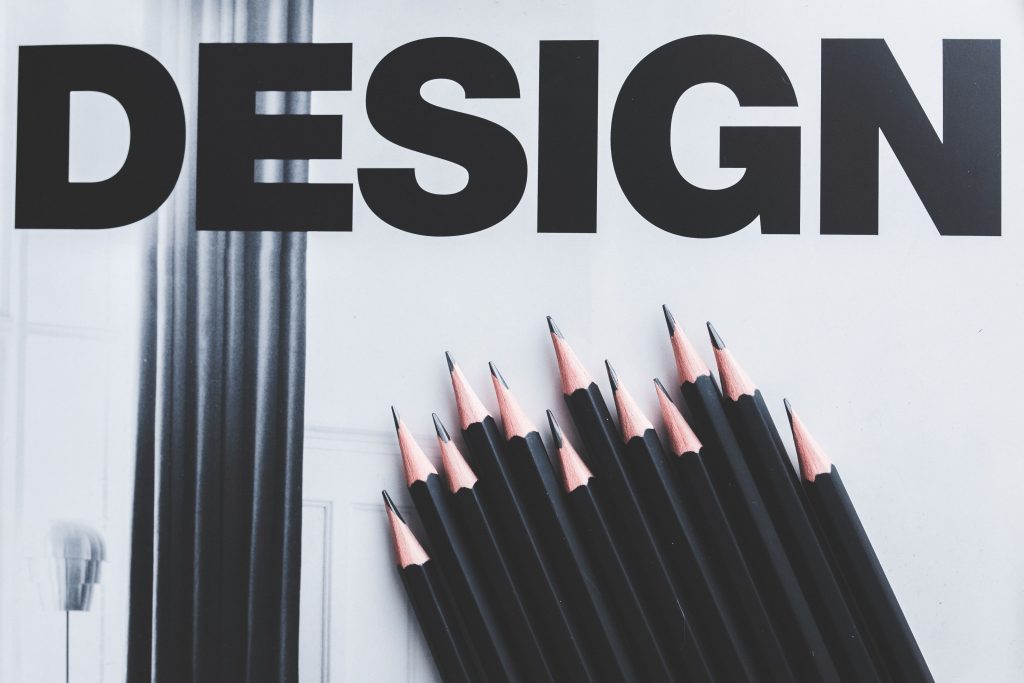Checklist of UX Design Rules for Websites and Landing Pages
Custom design is no longer just a trendy phrase. In a highly competitive environment with excellent designers and a variety of interfaces, it's crucial to listen to your customers and site visitors. Understanding the psychology of your page's visitors is essential for successful promotion and high-quality services.
To help you, we have compiled a checklist of UX design rules and principles for your website or landing page. Check it out!

Simplicity of design
The foundation of any website where you want customers to place an order is simplicity. This applies to both the text and the visual elements. Avoid overloading the interface, create an intuitive call-to-action, and don't make users go through multiple registration steps to complete an order.
The principle of "easier means better" design can include the following points:
- Simple design. Do not overload!
- Clear Call-To-Action. This applies to both the call to action itself and the visual — place the shadows correctly and use clear colors.
- Minimum of pop-ups. Pop-ups are still a controversial issue. If the statistics of your site show that users do not mind using the chat or entering their number to contact the manager, use it, but do not abuse it.
- Clear navigation. Nobody enjoys spending a long time looking for the right tab. Creativity is good, but use the usual principles for arranging all sections.
- Simplify registration and ordering. If your format allows you to place an order without registration, perfect. But if it is necessary (for example, if the product is very expensive or is associated with personal data), reduce it to three steps (at maximum!).
The most precise and capacious principle of UX design relates to simplicity: "Do not force the user to think." A visitor to your site should intuitively understand how to take the next step.

Reduction
The next rule pertains to both the interface and text. Even if your format involves longreads or a large volume of information, allow users the option to explore this content at their own discretion. Time is a resource that customers value above all else, except perhaps price.
Here are things that can be successfully shortened on your site:
- Obvious pointers. Do not underestimate people: the basket icon is understandable in any language and to any user, while the inscription "basket" under the icon takes up space and overwhelms the design. Shorten it!
- We refuse to place subheadings under Call-To-Action and other important elements. Call-To-Action is an obvious and understandable signal in itself. The best solution would be to invest time and effort in its detailed study rather than inserting subheadings under each button with an explanation of where this button will lead.
- Longreads optional. Arrays of text on a page lead not only to an increase in the length of the site itself but also to the desire to close this site. A good way to shorten this format is to use the "Read more" or "Read in full" button and show the text itself in the first two paragraphs. A cool solution would be to indicate the approximate time to read the text.
- Functional blocks. We struggle with the desire to show everything at once. One functional block has four or eight elements inside. It is better to group additional information into another thematic block.
- The way to solve the problem. The golden rule of UX design is that the problem should be solved in three clicks. Do not force the user to take a survey, like, and evaluate the quality of service in order to see the terms of delivery.
It is impossible not to say that it is not necessary to understand the principle of "shorten" quite literally. Visiting the site should at least not cause discomfort. Do not overdo it with abbreviations — an empty site is incomprehensible to anyone.
Taking care of users
UX is a complex concept. Even with a good and concise design, there is a chance to miss your customer. To prevent this from happening, focus on the value of a person's time and his desire to politely resolve any issue.

You can take care of your customer as follows:
- Show the important things. Do not hide the price list in the basement of the site, do not shorten the names when placing an order in the basket (the buyer is not obliged to remember after a 40-minute shopping trip that he added them there), and do not move the basket to the left corner on the second screen. Important elements come to the fore.
- Protect against accidents. We all don't like it when, when scrolling on a mobile device, the finger presses harder and we go to an incomprehensible page in a new tab. This can be avoided by clearly linking links to specific elements. It is not necessary to make a whole block that has a button clickable. The transition should be there.
- Enter the dialogue. It's nice when a company is friendly to its customers. Important note: this rule does not apply to Call-To-Action (with rare exceptions). For example, you can replace the faceless "read on the topic" with "I want more interesting things."
"Five more minutes" is a good example of how you can replace the boring "Read more."
- Watch the speed. Given that search algorithms prioritize download speed, we can conclude that no one will wait long for the page's response. Check the downloads on your site, enter lightweight pages, and keep track of the weight of images and animations.
- We suggest it and give you the opportunity to apply. Think about what is obvious on your site and what requires more detailed explanations. For the second format, it is worth making clear and compact hints. Just don't get carried away — we talked about the abundance of pop-ups just above.
Don't forget that even the coolest and most caring interface won't work if you don't think it through comprehensively. Your entire team should be interested in a friendly and responsive approach to the client.

Visual subtleties of design
In addition to simplicity and obviousness, UX design consists of more specific things that are worth checking out on your site. Let's talk about the visual "rules" that help the site look more modern and convenient:
- We monitor the density. When designing pages, do not abuse delimiters, frames, and lines. When the design breathes, it is more pleasant to be on it than when each block is separated by a background, a line, and a container.
- We are friends with contrast. UX design assumes a minimum number of elements where possible. Accordingly, you can attract the visitor's attention with the help of contrast (it is better to use a ratio of 4.5:1). Also, contrasting elements are more convenient for visually impaired users.
- Minimum fonts. There are many beautiful fonts. Unfortunately, the site is not the place where it is worth showing all the variety of curls and letters. Make it a rule to use a maximum of two fonts (in complex fonts, it is better to limit the variation in the width of the character). In general, in order to avoid such creative flights, there is a brandbook.
- Color hierarchy. To show the importance of certain elements, you can use a color hierarchy. A reasonable gradient is a great solution for a block. Less important information can be highlighted, for example, in light green; more important information can be highlighted in green, and the button at the end of the block can be changed to a Christmas tree color. The transparency of elements works on the same principle.
- Focus on the mobile version. According to statistics, 49% of mobile device users hold a smartphone in one hand, controlling the contents with their thumb. Conduct an experiment — take your phone in this position and see which zone is the most accessible. It is better to place important elements closer to the right corner and in the center of the screen. This can also include the rule of button sizes; keep in mind that getting on the baby button from the phone is more difficult. Don't neglect it.
To navigate the visual components of UX design, follow the trends, study classical techniques and elements, and focus on the principles of simplicity and clarity.
Summing up the results
UX design is far from being as straightforward as it might appear initially. When dealing with website design and layout, it's crucial not just to adhere to rules and principles, but also to have a deep understanding of the subject matter. While the psychology of user interfaces can seem standardized in some respects, it's essential to remember that each client is unique. This nuance should never be overlooked.
Headings: Design




